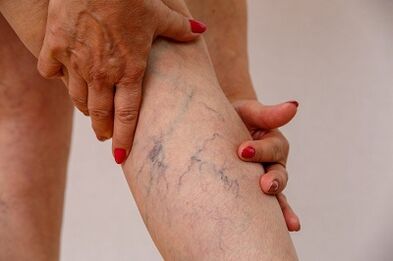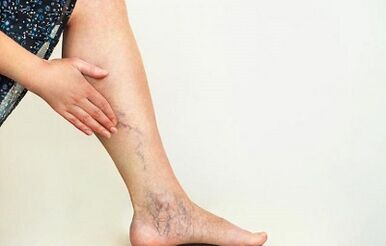
Varicose veins are one of the fairly common pathologies, but not everyone even knows that they suffer from this disease.
Therefore, many people simply do not notice a small venous network on the legs, especially men, as well as middle-aged and elderly women who do not always pay much attention to their appearance.
But the appearance of a venous network in the legs is only the first stage of varicose veins, which, without treatment, gradually passes into the second and third, as a result of which the venous network is replaced by dilated and inflamed veins, and then by the formation of nodes in them.It should be noted that one of the manifestations of varicose veins is hemorrhoidal varicose veins, which are known as hemorrhoids and cause many inconveniences, often leading to significant blood loss, anemia and other complications.
There can be many reasons for the appearance of varicose veins, and regardless of the reasons for the appearance of varicose veins and the form of the disease, it is necessary to start treatment as soon as possible.In this case, the main direction of treatment is the use of venotonics, and this also applies to varicose veins of the lower extremities and hemorrhoids.
Venotonic drugs
Often made from various herbs or fruit seeds, they affect the wall of venous vessels, causing their narrowing and promoting the movement of blood towards the heart, preventing its stagnation in the vessels.Thanks to this, it is possible to eliminate both existing varicose veins and prevent the progression of the disease.
Local preparations are also of great importance.In addition, for hemorrhoids, it is possible to use various suppositories, while for varicose veins of the lower extremities, ointments that have both a vessel-stabilizing and anticoagulant effect demonstrate quite high effectiveness.Thanks to this, it is possible to eliminate both the external manifestations of the disease and eliminate symptoms such as heaviness in the legs and swelling of the legs, which with varicose veins occur at night after a long stay on their feet.
Late initiation of treatment not only leads to the progression of symptoms, but also to the possible occurrence of complications that can even be life-threatening.

Therefore, one of the most dangerous complications is the development of pulmonary embolism.Therefore, stagnation of blood in the veins of the lower extremities leads to the formation of blood clots, which can be firmly attached to the wall of the vein or not connected to it.Therefore, at one time or another, a clot can break open and be carried with the blood to the heart and then enter the pulmonary arteries.The cessation of blood flow through the pulmonary arteries due to the entry of a blood clot into them causes necrosis of the lung tissue and hemorrhage into it.And if the blood clot turns out to be large and blocks the pulmonary artery, sudden death may even occur.
In this sense, it is generally accepted that pulmonary embolism is the most dangerous complication of varicose veins, although one should not think that this alone can be dangerous for varicose veins, since, as mentioned above, the disease can also be complicated by bleeding and subsequent anemia.
In the early stages, varicose veins not only cause aesthetic inconveniences, but also significantly reduce tolerance to physical activity.Therefore, a person begins to feel heaviness in the legs after a short stay standing or walking.In addition, with a more pronounced load, quite serious swelling may appear, as a result of which motor activity is even more limited.
Thus, it must be said that varicose veins cause discomfort already in the early stages of their appearance, while as they progress, the symptoms only worsen and the likelihood of developing complications increases significantly.
In view of this, it is necessary to start the treatment of varicose veins in the early stages to prevent the appearance of aesthetic defects and the possible progression of the disease with the development of thrombosis or thromboembolism.In addition, the disease can be treated very effectively with an integrated approach.If treatment begins in later stages, it is very important to prevent complications.
Therefore, treatment should not be neglected even in the early stages, and in the later stages it is important not only to treat varicose veins, which, if advanced, may require surgical treatment, but also to prevent life-threatening complications such as pulmonary embolism.

















